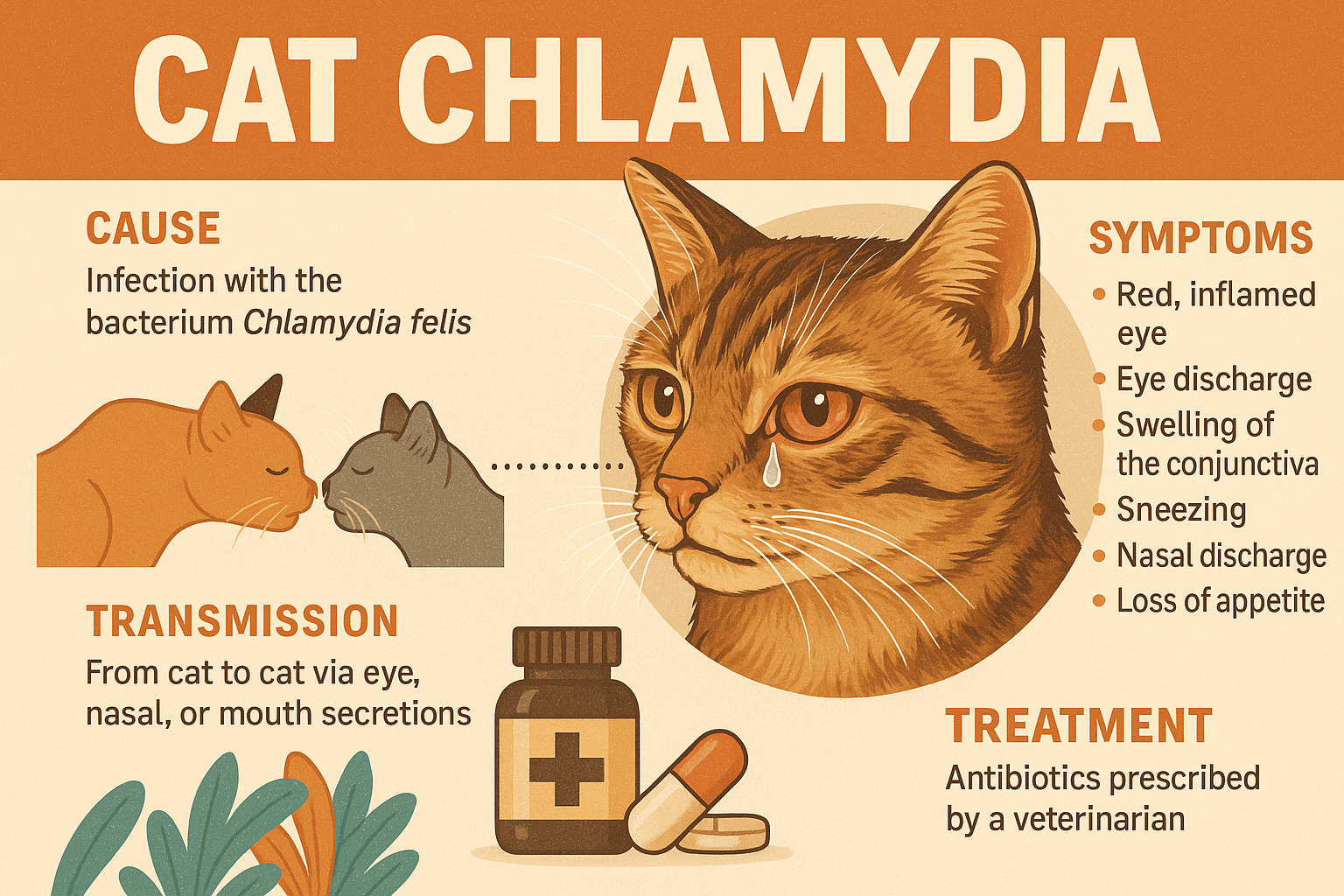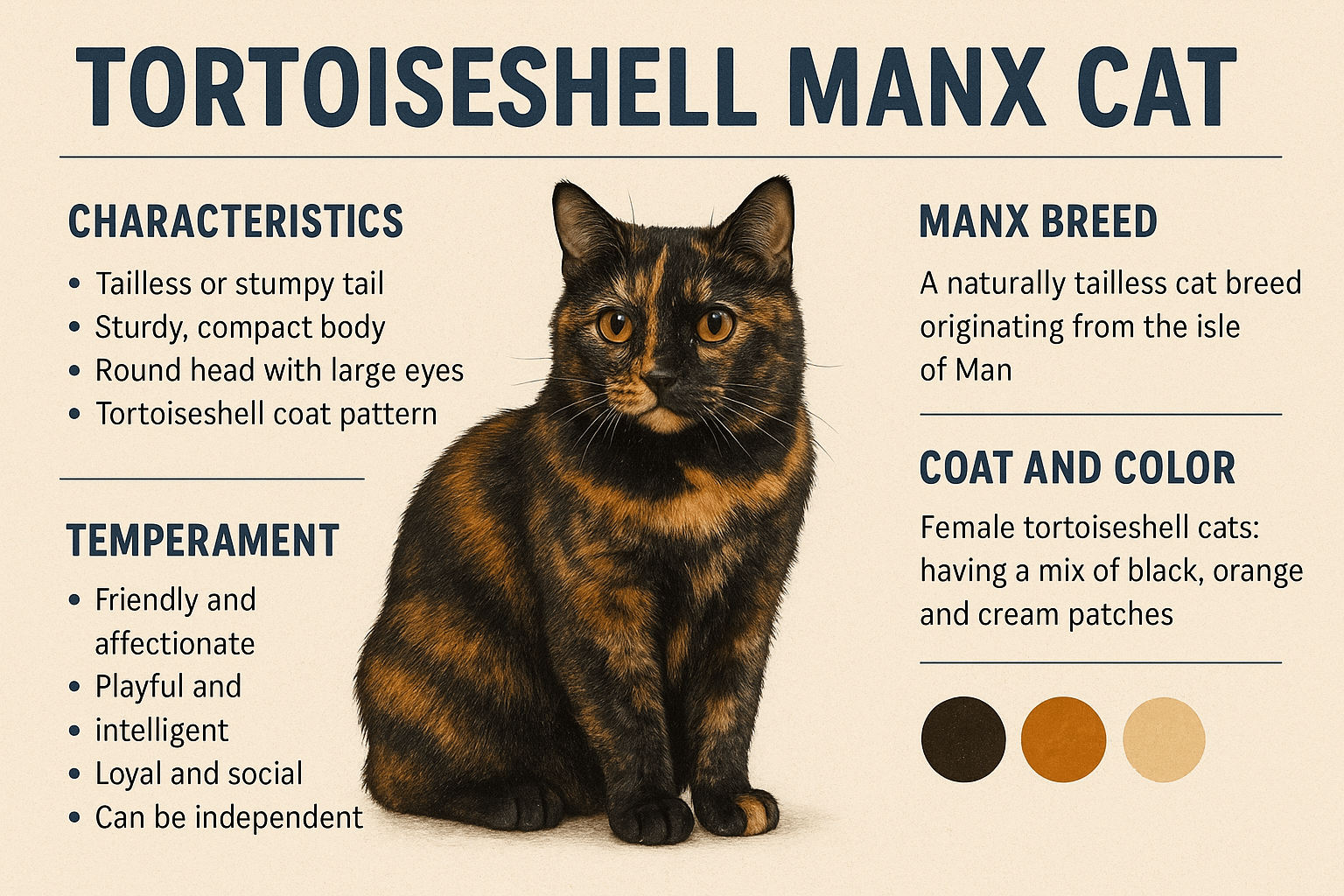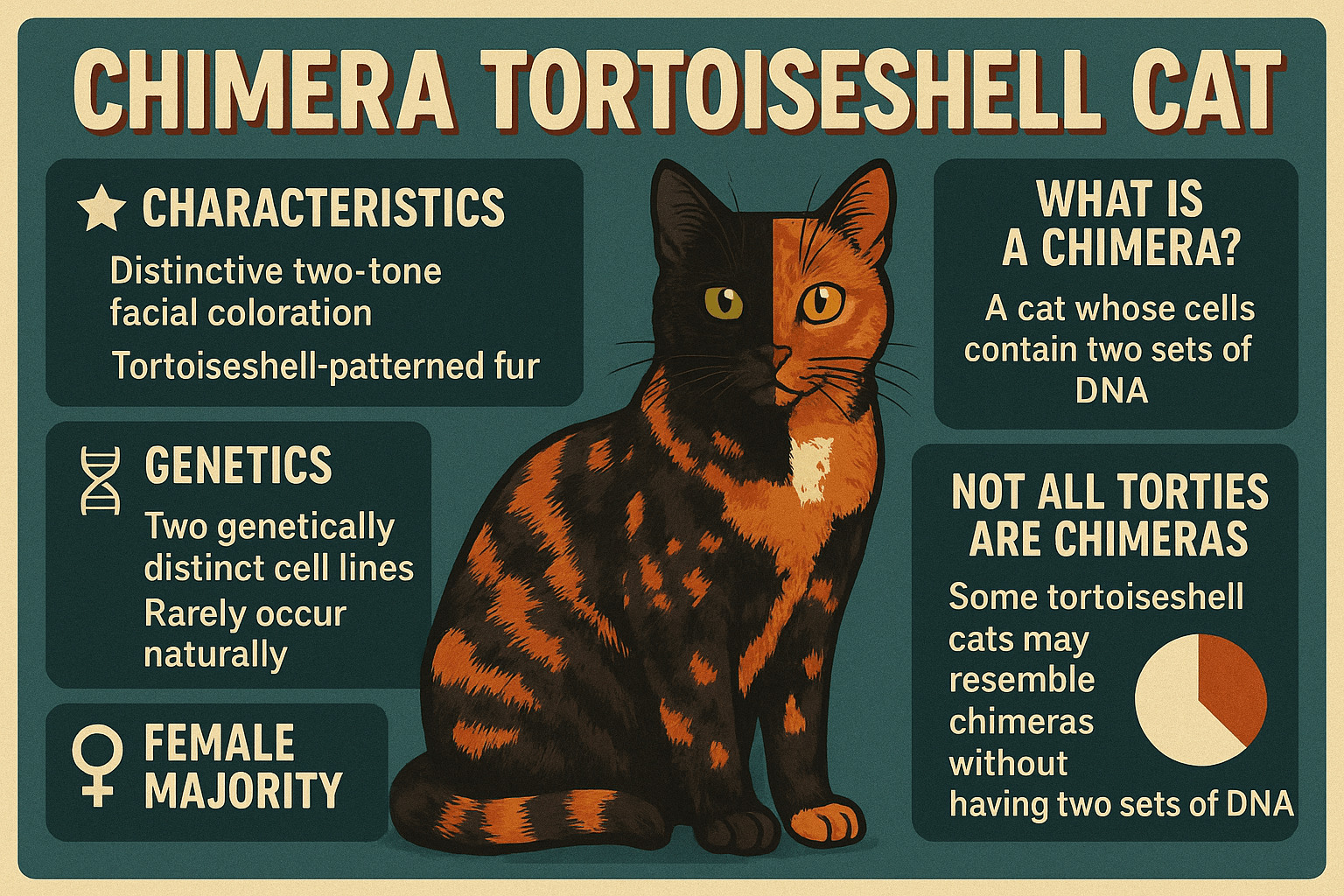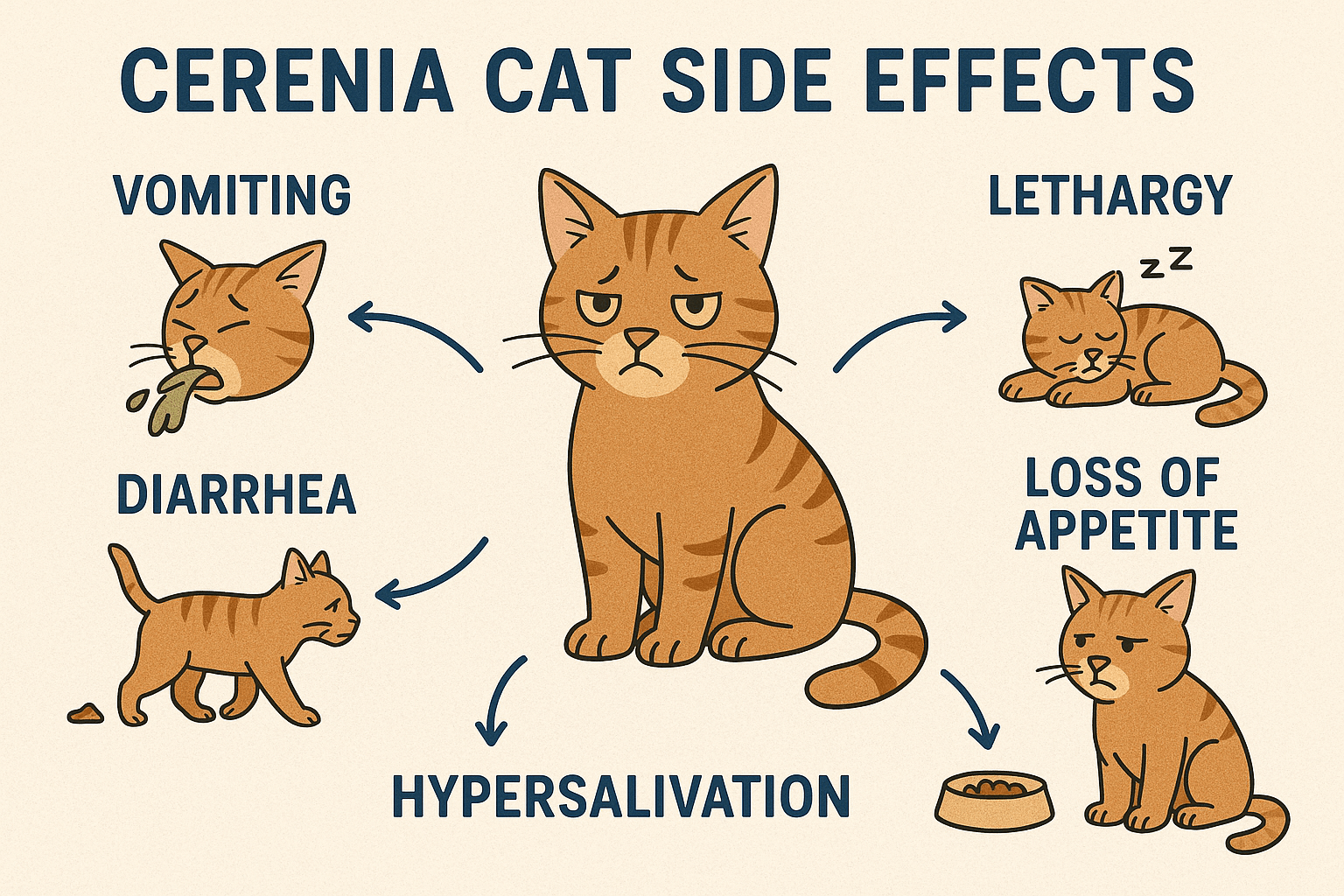Cat Chlamydia: What Every Cat Owner Should Know
When we think of chlamydia, most people associate it with a human sexually transmitted infection. However, cats can also suffer from a form of chlamydia—specifically, Chlamydophila felis, a bacterial infection that primarily affects their eyes. While not life-threatening, cat chlamydia can cause discomfort and lead to more serious complications if left untreated. Understanding the symptoms, causes, and treatment options is crucial for ensuring your feline friend stays healthy and happy. In this blog post, we’ll explore everything you need to know about cat chlamydia, from prevention to management, so you can provide the best care for your pet.
Symptoms of Cat Chlamydia You Should Watch For
Recognizing the signs of cat chlamydia early can make a significant difference in managing the condition effectively. Here are the most common symptoms to look out for in your cat.
Conjunctivitis (Pink Eye):
Redness, swelling, and discharge around the eyes are hallmark signs of chlamydia in cats. This inflammation is often referred to as “pink eye.”Excessive Tearing or Discharge:
Watery or pus-like discharge from one or both eyes may indicate an active infection.Squinting or Blinking Frequently:
Cats with chlamydia often squint or blink excessively due to eye irritation and discomfort.Mild Sneezing or Nasal Discharge:
While less common, some cats may experience mild respiratory symptoms alongside eye issues.Lethargy or Loss of Appetite:
If the infection becomes severe, your cat may appear tired or lose interest in food.
If you notice any combination of these symptoms, it’s important to consult your veterinarian promptly to confirm the diagnosis and begin treatment.
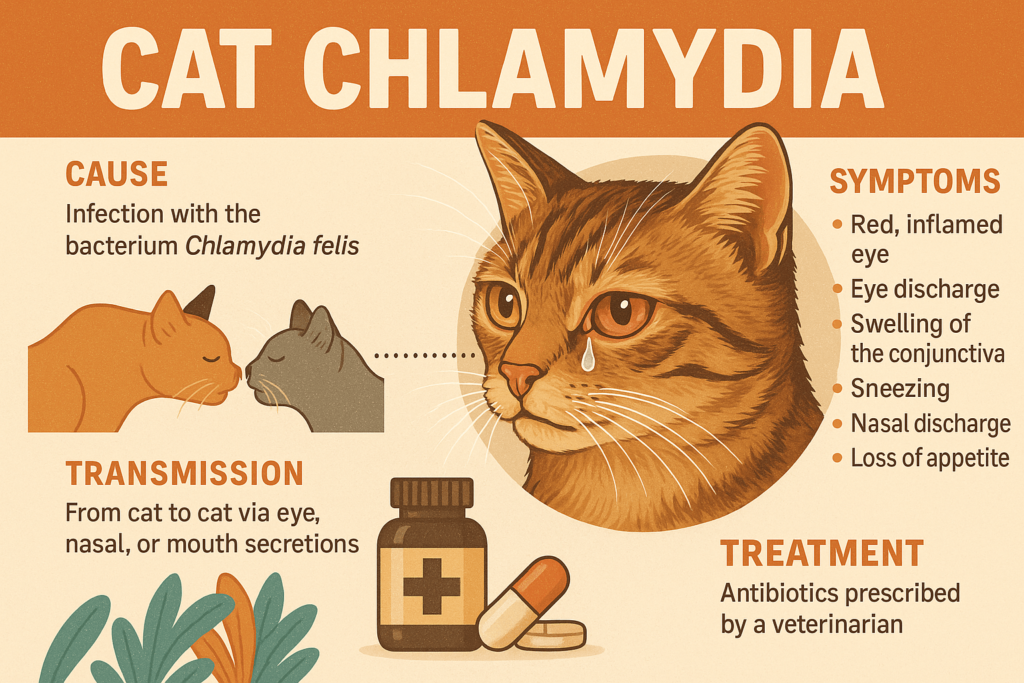
Causes and Risk Factors of Cat Chlamydia
Understanding what causes cat chlamydia and the factors that increase its risk can help you take preventive measures to protect your furry companion.
Direct Contact with Infected Cats:
The bacteria spread through close contact, such as grooming or sharing food bowls with an infected cat.Overcrowded Living Conditions:
Multi-cat households or shelters are high-risk environments where infections can spread quickly.Weakened Immune Systems:
Kittens, senior cats, or those with underlying health conditions are more susceptible to contracting chlamydia.Poor Hygiene Practices:
Failing to clean litter boxes, bedding, or shared items regularly can contribute to the spread of bacteria.Outdoor Exposure:
Cats that roam outdoors may come into contact with infected animals, increasing their risk of infection.
By addressing these risk factors, you can reduce the likelihood of your cat developing chlamydia and maintain a healthier environment for them.
Check this guide 👉Can Cat Chlamydia Be Passed to Humans? Best 7 Tips!
Check this guide 👉Common Cat Eye Problems: Best 7 Expert Tips!
Check this guide 👉Dichromatic Cat Eyes: Best 7 Expert Tips!
Preventing Cat Chlamydia | Treating Cat Chlamydia |
|---|---|
Keep cats indoors to limit exposure | Administer prescribed antibiotics |
Regularly clean shared spaces and items | Use warm compresses to soothe irritated eyes |
Separate infected cats from healthy ones | Follow up with your vet to monitor recovery |
Vaccinate against feline upper respiratory diseases | Ensure proper nutrition to boost immunity |
Schedule routine vet check-ups | Avoid self-medicating without professional guidance |
Treatment Options for Cat Chlamydia
Once diagnosed, treating cat chlamydia involves a combination of veterinary care and at-home management. Here’s what you can expect during the treatment process.
Prescription Antibiotics:
Your vet will likely prescribe oral or topical antibiotics like doxycycline to eliminate the bacteria causing the infection.Eye Drops or Ointments:
Medicated eye drops or ointments may be recommended to alleviate eye symptoms and promote healing.Isolation During Recovery:
Keeping the infected cat away from other pets prevents the spread of the bacteria until they’re fully recovered.Maintaining Hygiene:
Regularly clean your cat’s bedding, toys, and food dishes to minimize reinfection risks.Follow-Up Appointments:
Schedule follow-ups with your vet to ensure the infection has cleared completely and adjust treatment if needed.
With proper care and adherence to your vet’s recommendations, most cats recover fully from chlamydia within a few weeks.
How to Support Your Cat During Recovery
Recovery from cat chlamydia requires patience and attentive care. Here are some ways to support your cat during this time and speed up their healing process.
Provide Comfortable Rest Areas:
Create cozy, quiet spaces where your cat can rest undisturbed while recovering.Encourage Hydration:
Ensure fresh water is always available to keep your cat hydrated and aid in flushing out toxins.Monitor Eating Habits:
Offer appealing, nutritious food to encourage eating, especially if your cat’s appetite is reduced.Gentle Cleaning of Eyes:
Use a damp cloth to gently wipe away discharge from your cat’s eyes, keeping the area clean and comfortable.Minimize Stress:
Reduce environmental stressors, such as loud noises or changes in routine, to help your cat focus on healing.
Supportive care not only aids recovery but also strengthens the bond between you and your feline companion.
Common Misconceptions About Cat Chlamydia
There are several myths surrounding cat chlamydia that can lead to confusion among pet owners. Clearing up these misconceptions helps foster a better understanding of the condition.
It’s Only Spread Through Sexual Contact:
Unlike human chlamydia, feline chlamydia spreads through direct contact, not sexual activity.All Cats Show Obvious Symptoms:
Some cats may carry the bacteria without showing visible signs, making regular vet visits essential.Antibiotics Always Cure It Completely:
Without proper hygiene and follow-up care, reinfection can occur even after antibiotic treatment.Indoor Cats Can’t Get It:
Indoor cats can still contract chlamydia if exposed to an infected visitor or contaminated item.It’s Rare in Healthy Cats:
Even healthy cats can develop chlamydia under certain conditions, such as overcrowding or stress.
Dispelling these myths ensures you approach cat chlamydia with accurate knowledge and realistic expectations.
Tips for Managing Multi-Cat Households
In multi-cat households, preventing and managing chlamydia requires extra diligence. These tips can help keep all your cats healthy and infection-free.
Separate Infected Cats Immediately:
Isolate sick cats to prevent the spread of bacteria to healthy ones.Disinfect Shared Items Daily:
Clean food bowls, water dishes, and litter boxes frequently to eliminate germs.Vaccinate All Cats in the Household:
Vaccination reduces the risk of outbreaks, especially in crowded environments.Observe Behavior Closely:
Watch for early signs of illness, such as eye discharge or lethargy, in all cats.Consult Your Vet for Group Health Plans:
Work with your vet to establish a tailored healthcare plan for your entire feline family.
These strategies minimize the risk of chlamydia spreading and maintain harmony in your home.
Long-Term Care After Recovery
Even after your cat recovers from chlamydia, ongoing care is vital to prevent recurrence and maintain their overall well-being.
Schedule Routine Vet Visits:
Regular check-ups allow your vet to monitor your cat’s health and detect potential issues early.Boost Their Immune System:
Feed a balanced diet rich in vitamins and nutrients to strengthen your cat’s natural defenses.Keep Stress Levels Low:
A calm, predictable environment supports long-term physical and emotional health.Practice Good Hygiene Consistently:
Continue cleaning living areas and shared items to prevent future infections.Watch for Recurring Symptoms:
Stay vigilant for any signs of eye irritation or respiratory issues that could indicate a relapse.
Long-term care ensures your cat enjoys a happy, healthy life free from recurring infections.
Frequently Asked Questions About Cat Chlamydia
Can humans catch chlamydia from cats?
No, Chlamydophila felis is species-specific and cannot infect humans.
How long does treatment for cat chlamydia last?
Treatment typically lasts 2-4 weeks, depending on the severity of the infection.
Is there a vaccine for cat chlamydia?
Yes, vaccines are available to help prevent chlamydia, though they may not offer complete immunity.
Can kittens get chlamydia?
Yes, kittens are highly vulnerable due to their immature immune systems.
What happens if cat chlamydia goes untreated?
Untreated chlamydia can lead to chronic eye problems or secondary infections, impacting your cat’s quality of life.
Staying Vigilant Against Cat Chlamydia
While cat chlamydia is a manageable condition, staying informed and proactive is key to protecting your cat’s health. By recognizing symptoms early, practicing good hygiene, and following your vet’s advice, you can ensure your feline friend remains happy and healthy. Remember, prevention is always better than cure—so prioritize regular check-ups and create a safe, clean environment for your pet. With love, care, and attention, you can help your cat overcome chlamydia and enjoy many years of companionship together.
Why Are Cats So Warm? If you’ve ever cuddled up with a cat, you’ve likely noticed how warm they feel against …
Tortoiseshell Manx Cat: Best 7 Expert Tips! Discover expert advice on caring for this unique breed, from health and grooming to personality insights. Perfect for cat lovers!
Chimera Tortoiseshell Cat: Best 7 Expert Tips! Discover the unique traits, care needs, and fascinating facts about chimera tortoiseshell cats to better understand these rare feline wonders.
Cerenia Cat Side Effects: Best 7 Expert Tips! Discover expert advice on managing Cerenia side effects, ensuring your cat’s safety, and promoting a smooth recovery with practical tips.

